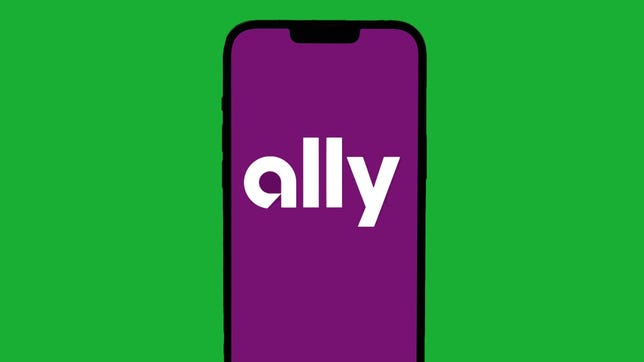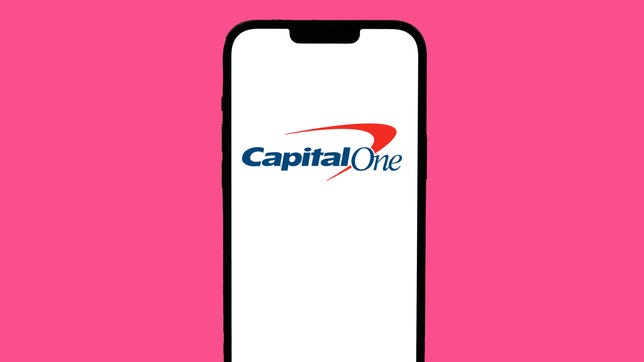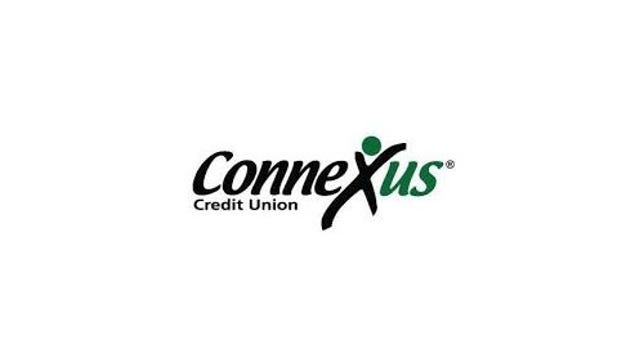
If you’re ready to combine finances with your partner or teach your kids about money, a joint bank account can help. It lets you combine all income into one account to track your money, goals and bills all in one place.
Depending on your shared goals and reasons for opening a joint bank account, some features may be more important than others. We reviewed dozens of joint bank account options for low fees, low minimum deposit requirements, ATM and branch availability and the ability to earn interest. Here are our picks for best joint checking accounts for 2023.
Annual percentage yields or APYs current as of Jan. 27, 2023.
SoFi
- APY: 2.50% APY for joint checking; 3.75% APY for joint savings
- Minimum deposit required: No
- Minimum balance requirement: No
- Monthly fee: No
- ATM access: 55,000 ATMs within the Allpoint Network. Out-of-network fees aren’t reimbursed.
- Physical locations: No
SoFi doesn’t charge any monthly maintenance fees and it also doesn’t have a minimum balance or deposit requirements for its joint checking account. You’ll earn a competitive interest rate (up to 2.75% APY) and get 15% cash back when you use your debit card to make purchases at select local businesses. Right now, when you open a bank account and set up direct deposit, you may also qualify for a welcome bonus of up to $250.
This online joint bank account also lets you round up your purchases to the nearest dollar, then transfer the remainder to your SoFI high-yield savings account. You’ll automatically receive a savings account when opening a joint checking account, so if you’re not interested in two new accounts, you might consider another option.
SoFi’s joint checking account also comes with $50 in overdraft coverage, as long as you have monthly deposits of at least $1,000. And you can get paid up to two days early. However, though SoFi has over 55,000 fee-free ATMs, you’ll pay a surcharge for any ATM out of network.
- Joint checking APY: Earn 0.10% on balances less than $15,000, then 0.25% on balances more than $15,000.
- Minimum deposit required: $0
- Minimum balance requirement: $0
- Monthly fee: $0
- ATM access: Use Allpoint ATMs for free. You’ll be reimbursed up to $10 per statement cycle for surcharge fees at out-of-network ATMs.
- Physical locations: No
Ally’s joint checking account simplifies banking for both account holders and is full of features like early direct deposit to get your paycheck up to two days sooner. If you want to automate savings, Ally can automatically round your transactions up to the nearest dollar, then transfer the money to an Ally high-yield joint savings account — which can earn up to 3.30% APY.
Ally’s CoverDraft℠ gives you overdraft protection for up to $100 (or $250 if you set up qualifying direct deposits). You may qualify 30 days after you deposit $100 into the checking account. Then, you can increase your overdraft protection amount after two months of direct deposits.
There are no monthly maintenance fees, minimum balance requirements or overdraft charges. But you can expect a few standard banking fees, for services like outgoing wire transfers, same-day bill pay and expedited delivery.
But the perks outweigh the fees with this interest-earning account. Ally offers in-network ATMs at Allpoint ATMs, and you’ll get up to $10 reimbursements monthly for out-of-network surcharges.
There’s one downside that sets Ally apart — you won’t be able to deposit cash directly into your account. You can only transfer funds from another Ally account, external bank account, check or wire transfer. And since Ally is an online-only bank, if you want access to a physical branch, it’s best to consider another option.
Read our full review of Ally Bank.
Alliant Credit Union
- Joint checking APY: 0.25%
- Minimum deposit required: $5
- Minimum balance requirement: $0
- Monthly fee: $0
- ATM access: Access to 80,000 in-network ATMs. You can get up to $20 each month reimbursed for out-of-network ATMs.
- Physical locations: Yes
If you have your sights set on a savings goal, Alliant’s high-rate checking account can help. To earn interest, you’ll need to opt-in for eStatements instead of paper statements and receive at least one qualifying electronic deposit (direct deposit, ATM deposit, mobile deposit or a transfer from another bank account) into your account each month.
We also like that Alliant offers overdraft protection services, including Courtesy Pay and Overdraft Protection, for free. In addition, this bank has joint teen checking accounts for parents with no monthly service charges, monthly fees or minimum balance requirements. Your first box of checks is free, there are 80,000 in-network ATMs and you’ll get up to $20 per month in rebates for out-of-network ATM surcharges.
However, Alliant is a digital credit union that offers online and mobile banking services — but if you prefer managing your money with your partner or kid in person, it’s best to consider another option. Plus, you’ll need to become a member to get access to Alliant’s rates and APYs. The easiest path to membership for most includes becoming a member of Foster Care to Success. When you sign up, Alliant will pay the one-time $5 membership fee on your behalf. You’re also eligible for membership if you:
- Are a current or retired employee from Alliant business or organization partners
- Are a spouse or immediate family member of an Alliant member
- Live or work in one of the communities near the Chicago headquarters
Learn more about Alliant Credit Union on our Best Credit Unions list.
James Martin / CNET
- Joint checking APY: 0.10%
- Minimum deposit required: $0
- Minimum balance requirement: $0
- Monthly fee: $0
- ATM access: 700,000 fee-free ATMs
- Physical locations: Yes
Parents that want to give their kids some financial freedom and flexibility should consider Capital One’s Money Teen checking account. You’ll earn interest on your balance, and there are no minimum requirements or maximum amount of interest you can earn. Parents also have control over their kids’ spending limits — though Capital One does cap daily limits to $500 for those under 18 and $5,000 for those over 18.
Other money management perks include an online feature to separate spending and savings by distributing money between your child’s “Spendable” and “Set Aside” accounts. Parents can also lock and unlock the Money Teen account and change the debit card PIN. Keep in mind that only the kid will receive a debit card.
Capital One lets you manage this account at a physical branch, online or via the mobile app.
The account comes with a few standard checking features, including paying with Zelle, direct deposit and transfers. Capital One account doesn’t charge for electronic transfers or foreign transactions. However, there are a few fees, including a $10 cashier’s check fee and surcharges for out-of-network ATMs.
Read our full review of Capital One Bank.
Sarah Tew/CNET
- Joint checking APY: N/A
- Minimum deposit required: $25 (Everyday Checking)
- Minimum balance requirement: $0 (Everyday Checking)
- Monthly fee: $10 (Everyday Checking)
- ATM access: 12,000 in-network ATMs, and you won’t be reimbursed for out-of-network ATM surcharges.
- Physical locations: Yes
Wells Fargo has several joint checking account options, but we recommend the Everyday Checking account because it has fewer fees compared to the bank’s other options.
The account requires a $25 minimum deposit and a $10 monthly maintenance fee. But there are a few ways you can waive the fee.
- $500 minimum daily balance
- $500 or more in total qualifying direct deposits
- A linked Wells Fargo Campus ATM or Campus Debit Card
- Primary account owner is 17 to 24 years old
Even though this account comes with more fees and fewer perks compared to other banks with joint account options, Wells Fargo offers more branch locations — which may be more convenient if you prefer in-person banking.
The Everyday Checking account comes with overdraft protection, but if you want more discounts, rewards and perks, we recommend the Prime Checking account. It has a $25 monthly maintenance fee.
Connexus Credit Union
- Joint checking APY: Up to 1.75% (for balances $25,000 and under)
- Minimum deposit required: $5
- Minimum balance requirement: No
- Monthly fee: $0
- ATM access: 67,000 in-network ATMs. You’ll be reimbursed up to $25 for out-of-network surcharges. However, you must meet account requirements to qualify for reimbursements.
- Physical locations: Yes
You can choose from several Connexus checking accounts depending on your needs, but we recommend the Xtraordinary account if you’re opening a joint account, because it earns a competitive interest rate of up to 1.75% APY (for balances $25,000 or under).
To earn interest, you must make at least 15 debit card purchases or have at least $400 in debit card spending and e-statements per month. You’ll also only earn the highest APY for up to $25,000 — though we’d recommend moving additional funds into a high-yield savings account.
The Connexus’ Xtraordinary account offers free Co-op and MoneyPass transactions and up to $25 in monthly reimbursements for out-of-network ATM surcharges. But if you don’t meet the account requirements, you won’t earn interest or receive the ATM surcharge rebates, in which case, we’d recommend considering Alliant or Ally.
There is a $4 overdraft fee per each day your account is overdrawn, but you can avoid this by linking your Connexus checking and savings accounts.
In addition to online banking, there are a few Midwestern Connexus branches for in-person banking, as well as 5,600 shared branches across the US.
Read our full review of Connexus Credit Union.
Best joint bank accounts, compared
| Bank | APY | Minimum deposit requirement | Minimum balance requirement | Monthly fee | Physical locations |
|---|---|---|---|---|---|
| SoFi Checking | 2.50% | $0 | $0 | $0 | No |
| Ally Interest Checking | 0.10% to 0.25% | $0 | $0 | $0 | No |
| Alliant High-Rate Checking | 0.25% | $5 | $0 | $0 | Yes |
| Capital One Money Teen Checking | 0.10% | $0 | $0 | $0 | Yes |
| Wells Fargo Everyday Checking | N/A | $25 | $0 | $10 (can be waived) | Yes |
| Connexus Xtraordinary Account | Up to 1.75% (On balances $25,000 or less) | $5 | $0 | $0 | Yes |
What is a joint checking account and how does it work?
A joint checking account is a bank account for two or more people. Usually, joint accounts work best for couples, business partners, close family members or parents and children. Aside from two account holders, a joint checking account functions like a standard checking account.
For example, two people may deposit their paychecks, or a parent and child can both contribute money together for a few years. In most cases, both account holders have equal access to the account to transfer and deposit cash or handle other banking services. However, depending on the account, parents often have full control over spending limits and other features on their child’s account.
You might choose a joint banking account to make it easier to access combined finances to pay shared bills like mortgages, rent, utilities and more.
How to find the best joint account
You’ll want to ensure the money in your joint banking account is safe and easy to access. We recommend reviewing multiple joint checking accounts at different banks to find the right fit for your financial needs. Here are a few general rules to keep in mind when choosing your account.
FDIC or NCUA insurance
FDIC and NCUA insurance protects your money up to $250,000. You can use the FDIC’s bank tool to check if your bank is covered. The NCUA also has a locator for credit unions.
Fees
Some banks charge additional fees that can eat away at your balance. For example, you may overdraft your account if your partner makes an unexpected expense. If you’re sharing the account, you’ll need to communicate and keep an eye on the account to stay on top of any account charges and changes.
Here are a few fees to look out for:
- Insufficient funds
- Monthly maintenance (or service)
- Overdraft
- Out-of-network ATM
- Wire transfer
You may avoid some of these costs by choosing an account with low or no fees, like Ally’s high-yield checking account. You may also find a joint bank account that waives fees if you meet specific requirements. For example, Wells Fargo waives its monthly maintenance fee if you have a $500 minimum daily balance, at least $500 in direct deposits or meet other requirements.
ATM access
If you need to deposit or withdraw cash often, make sure you have access to in-network ATMs in your area or select a joint checking account with no or low ATM fees. Most banks and credit unions have in-network ATMs to avoid paying extra for ATM use. Out-of-network ATMs usually charge a few bucks, but some banks waive these fees up to a certain amount. If both account holders need to withdraw cash regularly, the fees can add up, so an account with a higher ATM rebate may make sense.
Digital or mobile banking
Mobile or online banking can come in handy when both account holders need to access the account from anywhere. Most mobile apps are free and can handle basic services, such as depositing checks, transferring money and more. Joint bank accounts generally have separate logins for each person to manage the shared account and any other individual accounts, such as your personal savings or retirement.
Pros and cons of a joint banking account
A joint bank account can be a good way to combine paychecks and manage money in one place. But there are some disadvantages to sharing finances.
Pros
- Joint effort to work toward financial goals
- Save on banking fees that may be doubled with separate bank accounts
- Potential to earn more in interest by keeping a higher balance
Cons
- Less spending autonomy
- Unequal paychecks and spending habits
- Both account holders are responsible for each others’ spending habits
Should you get a joint bank account with your partner or spouse?
Before opening a joint account with your spouse, think about the goal of joining finances. It may be to hold each other accountable for spending, to work towards future goals or to easily pay bills from one account. Regardless of the reason, both partners will need to track money coming in and going out to keep the account in good standing.
Yes, joint accounts can make it easy to see your financial situation as a whole so that you can plan accordingly. But individual checking accounts also have their benefits, including autonomy. You may want to hold on to your individual savings or extra money that you’re not ready to combine to maintain your financial independence. For example, you can have part of your paycheck deposited into your shared account and the rest into an individual checking or savings account. Or you can simply move money to a joint checking account as needed.
Have an open and honest discussion about how you plan to manage your individual and combined expenses, and consider your individual needs to decide if a joint account makes sense. If so, discuss how you plan to use the account to find the right one for your needs.
How to apply for a joint bank account
Once you narrow down your preferred bank and account, it’s time to apply. You’ll need a few documents from both account holders to get started, including:
- A government-issued ID or passport
- Drivers license
- Social Security card or Tax Identification Number
- Proof of your address, including your name and residence
- Phone number and email
Some banks require a minimum deposit amount to open an account. If so, check the approved methods, such as ACH, wire transfer or cash.
Usually, you’ll open a joint account the same way you’d open a traditional checking or savings account. When filling out your application, you’ll check a box that asks if you want to add a co-owner, joint owner or additional account holder. That lets the bank know to list two people on the account instead of one. From there, you’ll be asked to provide select information about the co-owner to add them.
Setting up your joint bank account
After you open your joint account, there are a few extra steps to make banking easy and convenient for both account holders. Here’s what else you should do.
- Set up online banking: If your bank has a mobile app or website, make sure both of you set up login details to track your transactions, transfer money and quickly glance at your balance.
- Order debit cards: Some branches can issue debit cards for account holders in person, but if you open your joint account with an online bank, you’ll each need to order a debit card. Even though you’ll have separate cards, you’ll still have one bill for all of the transactions.
- Find your nearest branch, if available: Some banking services are more convenient to handle in person — like getting a cashier’s check or making a wire transfer. If your bank offers a physical location, make sure you know where to find the nearest branch or ATM,
- Link an account for overdraft protection: Most banks suggest linking an account, such as your savings, just in case your account reaches zero to help protect you from overdraft fees. The bank can then pull from this to cover any transactions, if your bank offers this option. You may also be able to set up this account as a joint savings account too, so both account holders have access.
FAQs
Who pays taxes on a joint bank account?
If you earn any interest from a bank account, you’ll receive IRS form 1099-INT during tax season. With joint bank accounts, the bank will only send this form to one of the account owners — generally the primary account owner who opened the account. If your joint bank account is shared with a spouse, and you file your taxes jointly, it will be considered a joint expense and will be deducted from your shared tax return.
However, if you have a joint bank account with someone you are not married to, or you file your taxes separately, the process is not as simple. The primary account holder may decide to pay the tax in full for the interest accrued. If this option won’t work for you, you can figure out and send the other person form 1099-INT with the proper split. Rules can get tricky depending on which state you live in and how much an individual withdrew from the account during the year. We recommend talking to a certified professional accountant if you have any questions.
Can I apply for a joint bank account online?
If the bank allows, yes, you can apply for a joint bank account online. However, some credit unions and local banks may require you to open an account in person with both account holders present. In either case, you’ll still need all required documents for yourself and the other account holder.
How do I close a joint bank account?
How you close the joint bank account will depend on the bank’s requirements for closing accounts. You may be required to close the account in person, by phone or online. Most times, only one account holder is needed to close the account.
More than two dozen options were examined across a broad range of categories in both traditional and online-only banks and credit unions in order to determine these picks for the best joint checking accounts. First, we required all selections to be either FDIC or NCUA insured. We also prefer banks that have low or no minimum balance or deposit requirements. We also looked closely at account fees, favoring those with no fees or lower barriers to maintain an account. We also looked at online features, availability, ATM access and overdraft protection. Lastly, we considered accounts that earn APY, as well as welcome bonuses and other perks.
Banks researched
- Alliant
- Ally Bank
- Axos
- Bank of America
- Bethpage Federal Credit Union
- BMO Harris
- Capital One
- Chase
- CIT Bank
- Citi
- Connexus
- Discover Bank
- LendingClub
- Liberty Federal Credit Union
- Pentagon Federal Credit Union
- Presidential Bank
- Quontic Bank
- Regions Bank
- SoFi
- TD Bank
- TIAA
- Wells Fargo
More banking advice
The editorial content on this page is based solely on objective, independent assessments by our writers and is not influenced by advertising or partnerships. It has not been provided or commissioned by any third party. However, we may receive compensation when you click on links to products or services offered by our partners.






